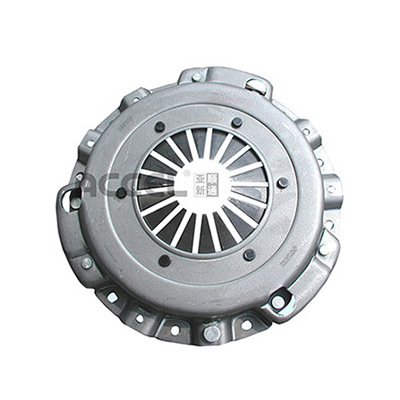- Arabic
- French
- Russian
- Spanish
- Portuguese
- Turkish
- Armenian
- English
- Albanian
- Amharic
- Azerbaijani
- Basque
- Belarusian
- Bengali
- Bosnian
- Bulgarian
- Catalan
- Cebuano
- Corsican
- Croatian
- Czech
- Danish
- Dutch
- Afrikaans
- Esperanto
- Estonian
- Finnish
- Frisian
- Galician
- Georgian
- German
- Greek
- Gujarati
- Haitian Creole
- hausa
- hawaiian
- Hebrew
- Hindi
- Miao
- Hungarian
- Icelandic
- igbo
- Indonesian
- irish
- Italian
- Japanese
- Javanese
- Kannada
- kazakh
- Khmer
- Rwandese
- Korean
- Kurdish
- Kyrgyz
- Lao
- Latin
- Latvian
- Lithuanian
- Luxembourgish
- Macedonian
- Malgashi
- Malay
- Malayalam
- Maltese
- Maori
- Marathi
- Mongolian
- Myanmar
- Nepali
- Norwegian
- Norwegian
- Occitan
- Pashto
- Persian
- Polish
- Punjabi
- Romanian
- Samoan
- Scottish Gaelic
- Serbian
- Sesotho
- Shona
- Sindhi
- Sinhala
- Slovak
- Slovenian
- Somali
- Sundanese
- Swahili
- Swedish
- Tagalog
- Tajik
- Tamil
- Tatar
- Telugu
- Thai
- Turkmen
- Ukrainian
- Urdu
- Uighur
- Uzbek
- Vietnamese
- Welsh
- Bantu
- Yiddish
- Yoruba
- Zulu
iul. . 27, 2024 18:01 Back to list
Understanding the Functionality and Applications of Synchronous Belts in Modern Machinery Systems
Understanding Synchronous Belts The Engine of Efficiency
Synchronous belts, often referred to as timing belts, play a crucial role in many mechanical systems. They are used to link two or more rotating shafts, ensuring that the rotation of one shaft is synchronized with that of another. This synchronization is vital in various applications, from automotive engines to industrial machinery. In this article, we will explore the structure, functionality, advantages, and applications of synchronous belts, underlining their significance in modern technology.
Structure of Synchronous Belts
Synchronous belts are typically made from a combination of synthetic rubber and reinforcement materials like fiberglass or steel strands. This construction grants them robustness and flexibility, enabling them to withstand high levels of tension and temperature. The unique characteristic of a synchronous belt is its toothed design, where the teeth of the belt fit into the grooves of the pulleys it engages with. This tooth engagement prevents slippage, allowing for precise control over timing and positioning.
Functionality
The primary function of a synchronous belt is to transfer rotational motion between two shafts efficiently. Unlike traditional V-belts, which can slip and cause timing issues, synchronous belts provide a positive drive system. This means that the belt will not slip, and the output speed will remain constant relative to the input speed. This precision is particularly important in applications involving engines, conveyor systems, and robotic mechanisms, where timing is critical for operational success.
One of the key benefits of synchronous belts is their ability to accommodate large power loads and varying operational speeds without loss of efficiency
. They can be designed for specific applications, ensuring that they meet unique operational demands while maintaining durability and reliability.Advantages of Synchronous Belts
synchronous belt

The advantages of using synchronous belts over traditional drive systems are numerous. One significant benefit is their lower maintenance requirements. Because they do not slip and require fewer adjustments compared to chain or V-belt systems, they reduce the wear and tear on machinery, ultimately prolonging the lifespan of both the belt and the equipment.
Additionally, synchronous belts operate more quietly than chains or gears, making them ideal for applications where noise reduction is essential. They are also lighter and take up less space, which can be critical in compact machinery designs.
Another key advantage is their efficiency. Synchronous belts can achieve high power transmission efficiency, often exceeding 90%. This efficiency translates to lower energy costs and increased output per input value, making them an economical choice for many industries.
Applications
Synchronous belts are utilized in a vast array of applications across various sectors. In the automotive industry, they are integral to the timing systems of engines, ensuring that the crankshaft and camshaft operate in unison. In manufacturing, they are often employed in conveyor systems, where their precise timing allows for consistent material handling and processing.
Other applications include robotics, where they facilitate accurate movement and positioning, and HVAC systems, helping in the operation of fans and compressors. The versatility of synchronous belts means they can be adapted for numerous other uses in both consumer products and industrial machines.
Conclusion
The importance of synchronous belts in modern technology cannot be overstated. Their ability to provide reliable, efficient, and synchronized motion across various systems makes them invaluable in numerous applications. As industries continue to innovate and demand higher efficiency, the role of synchronous belts will likely expand, further establishing them as the engine of mechanical efficiency in our increasingly automated world. Understanding and utilizing synchronous belts effectively can lead to significant advancements in both performance and reliability in mechanical operations.
-
Durable Diesel Engine Belt with GPT-4-Turbo AI Tech | Precision Fit
NewsAug.04,2025
-
High-Quality Tensioner Belt Pulley - Durable & Efficient
NewsAug.03,2025
-
Premium Timing Belt Factory | AI-Optimized Solutions
NewsAug.02,2025
-
Premium Custom V Belts Enhanced with GPT-4 Turbo AI
NewsAug.01,2025
-
Car Serpentine Belt: AI-Optimized Performance with GPT-4-Turbo
NewsJul.31,2025
-
Heat Joining Drive Belt | High-Durability Fusion Solution
NewsJul.31,2025

